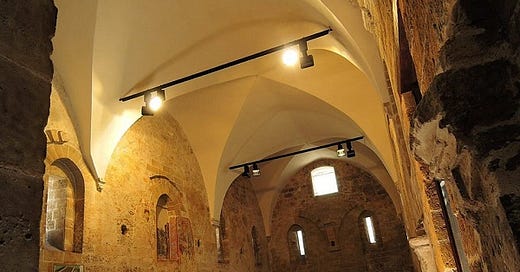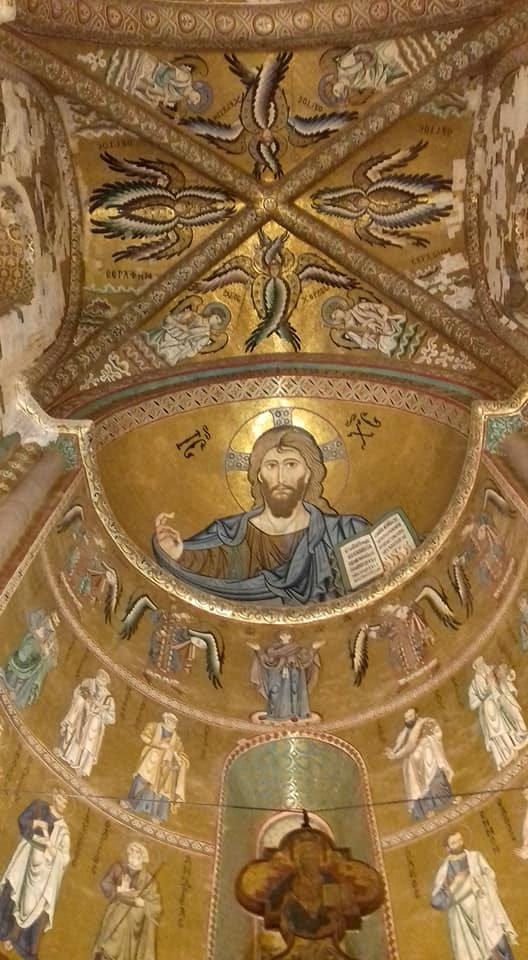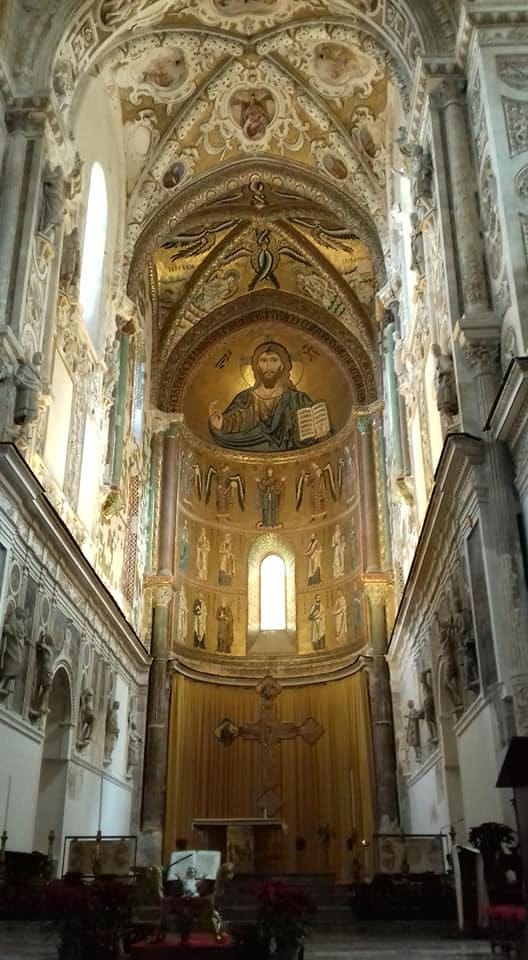Did you know that here is not a single building in Sicily that dates from the period of Arab domination? Not a single one. The Arabs ruled Sicily for a relatively brief time; they first arrived in 827, and after encountering fierce and prolonged resistance, subdued the entire island only by 965; they were expelled in 1091, though the first attempts to retake the island date from 1038. So the period when the Arabs were in undisputed control of the entire island was from 965 to 1038, a mere 73 years. Apart from this brief window, the Arab period, from 827 to 1091, was a period of war and disturbance; this surely puts the myth of the Arab golden age into perspective.
What the Arabs left behind was a huge amount of influence. They were the ones who introduced citrus fruits and pomegranates and irrigation to the land; the left their imprint on the language, and many Sicilian place names have Arabic roots, one of my favourites being Caltanisetta, Qal‘at al-Nisā, the Castle of the Women, which has a mysterious ring to it – which women? Who? What were their stories? Also Marsala, Marsa ʿAlī , (ʿAlī's harbour) or maybe, Marsa ʿāliyy (big harbour), but possibly Marsa Allāh (God's harbour) , a truly splendid designation. And Sicilian dialect too contains Arabic words, reminders of the time when the people there spoke Siculo-Arabic, a language which has now disappeared from the face of the earth apart from the Maltese islands, where it is still spoken. But to this day, Sicilians use words like tabbuto, coffin, which is still used in Malta and the Middle East.
In addition to the language the Arabs left behind a considerable number of craftsmen who had imbibed Byzantine skills and methods and worked for the Norman conquerors and produced the great buildings of the west of Sicily, the Cathedrals of Monreale and Cefalù, the Palace of the Normans in Palermo and numerous Arab-Norman churches. The Arab-Norman style is an extraordinary fusion that produces something spectacular, and which makes Palermo one of the most fascinating cities on earth.
I said earlier that there is no Arab-epoch building in Sicily. There is a faint possibility that a very plain room, once a monastic refectory next to the Church of San Giovanni degli Eremiti might date from the Arab period; and there is the even fainter possibility that it was once a mosque. But apart from this doubtful attribution, the Arab period has left nothing physical behind it. Everyone else, Romans, Greeks, and even Phoenicians did. But from the Arabs nothing remains.
In places like Palermo and beautiful Cefalù the layers of history that one encounters are in fact metaphysical layers, if that makes sense. Take Cefalù cathedral, which dates from roughly the century after 1031. This Norman cathedral astonishes us being so far from home, so far from Normandy, and yet so at home here in the southern sun. And the apse mosaic, one of the wonders of the world, created by craftsmen who were saturated with the culture of Byzantium and who may have been Arabs, shows us that Sicily is the place where distant and disparate traditions find a new, beautiful and unique synthesis.






